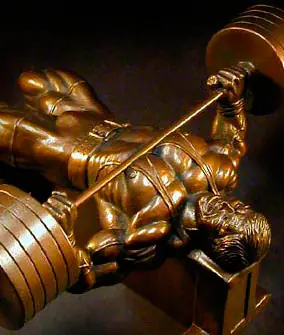In our previous articles about extreme sport powerlifting, we told you about the origin and emergence of this strength discipline, about our domestic and International Eventing Federations, and also a little about the basic rules of powerlifting used in competitions at various levels. You learned about the requirements for clothing, equipment, and equipment; clearly understood how weighing takes place and what age and weight categories are available in this sport. You also became acquainted with the nuances of refereeing and tournament regulations. Well, let's continue to find out powerlifting rules, and today we will dwell in detail on the three pillars of powerlifting - on the key mandatory exercises:
- I) Squats,
- II) Bench press,
- III) Deadlift/deadlift.
Three movements and rules for their implementation
1. Powerlifting. Squats.
The applicant must place the bar of the apparatus horizontally on his shoulders in a position no lower than three centimeters from the upper border of the front deltoid. The barbell must be held horizontally on your shoulders with your hands and fingers, encircling the bar. Place your feet straight (flat) on the platform, straightening your knees.
Having removed the bar from the racks, the athlete takes a step back, takes the starting position and thus awaits the signal from the chief judge. The signal will be given as soon as the competitor stands still and places the bar correctly. If retractable racks are used, the athlete removes the bar from the holding racks before they are removed and waits still for the referee's signal. The signal is given by performing a downward movement of the hand, clearly pronouncing the command: “Squat!”
Having received a signal from the head judge, the athlete must bend his legs and move his body down until the upper surface of his legs (quadriceps), bent at the hip joint, is lower than the highest points of the knees. Then you should rise without double jumping or any other downward movement until your knees straighten. When the athlete reaches a stationary vertical position, the judge gives the “go-ahead” (conventional signal) to place the barbell on the racks: he performs a reverse movement with his hand and pronounces a clear command: “On the racks!” The athlete returns the barbell to its place.
- a) locks,
- b) the ends of the rod
- c) or disks
...during the entire movement. However, the edges of the fingers holding the bar can touch the inner edge of the lock surface.
It is also important that at any time there should be no less than 2 and no more than 5 people on the pedestal assistants, who can be called for help to remove the barbell from the racks. However, once the bar leaves the racks, these persons are not allowed to assist the competitor in starting position, positioning the legs, getting the bar into proper position, etc.
If an attempt is unsuccessful due to an error by one or more assistants, by order of the head judge, the participant may be given an additional one to lift the same weight.
2. Powerlifting Bench Press.
The front element of the bench press must be placed on the platform facing the head judge. The participant lies on his back, touching his head, shoulders and pelvis to the surface of the bench. Feet are on the floor. This position must be maintained throughout the entire attempt.
If the color of the competitor's suit and the surface of the bench do not contrast enough for judges to detect possible lifting motion at the points of contact, the bench may be covered with a fabric that is a different color from the suit.
To position the feet firmly, the athlete can use discs or supports no higher than 0.3 m, while the entire foot must be flat on the surface. The dimensions of the stands should not exceed 0.45 x 0.45 m.
There may be 2-4 assistants on the platform who are allowed to assist the athlete in removing the bar from the rack holders. It is removed with straightened arms, and in no case on the chest. In this case, the distance between the inner edges of the index fingers should not be more than 0.81 m.
3. Powerlifting. Traction.
Initially, the bar should be horizontal at the athlete’s feet, grasped with both hands (in any arbitrary way). You need to lift in one continuous movement until the athlete straightens (facing the hall). Upon completion of this movement, the athlete’s knees should be fully straightened, the stance should be strictly vertical, and the shoulders should be lowered and pulled back.
As in other exercises, the chief judge’s signal consists of a downward movement of the hand vertically downward and a clear command: “Down!” In this case, the signal is not given until the bar is stopped and the athlete has clearly taken the finished position.
Also, any lifting of the apparatus or any deliberate approach to lifting the barbell should be considered an attempt.
In the following articles on our site we will continue the story about the heaviest sport in the World, powerlifting. You will get acquainted with all the nuances of weighing, study the functions and tasks of the panel of judges, and for reference purposes we will provide a table of rank requirements and qualification standards used in powerlifting. Don't switch!
Post Views: 305


